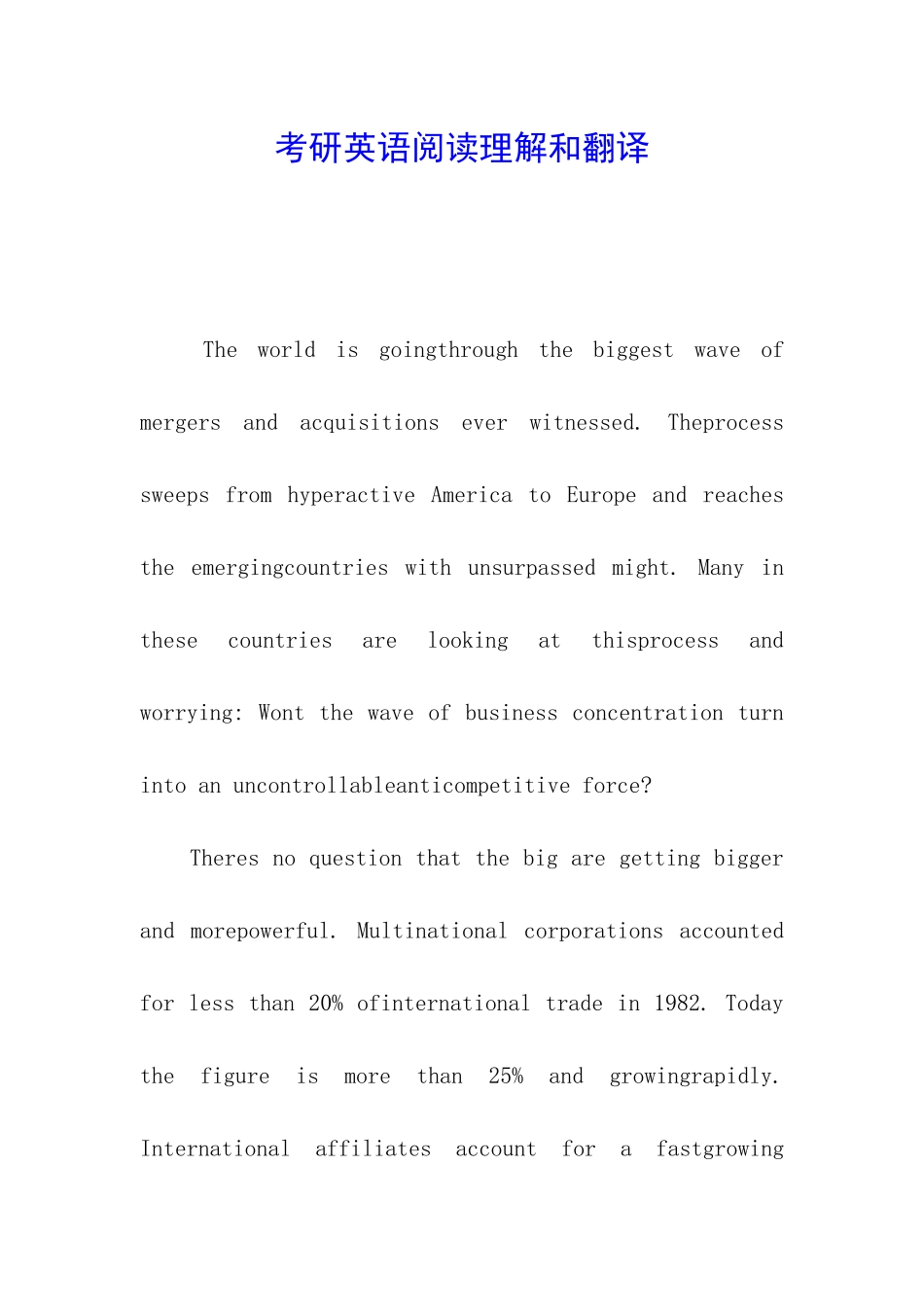考研英语阅读理解和翻译 The world is goingthrough the biggest wave of mergers and acquisitions ever witnessed. Theprocess sweeps from hyperactive America to Europe and reaches the emergingcountries with unsurpassed might. Many in these countries are looking at thisprocess and worrying: Wont the wave of business concentration turn into an uncontrollableanticompetitive force? Theres no question that the big are getting bigger and morepowerful. Multinational corporations accounted for less than 20% ofinternational trade in 1982. Today the figure is more than 25% and growingrapidly. International affiliates account for a fastgrowing segment ofproduction in economies that open up and welcome foreign investment. InArgentina, for instance, after the reforms of the early 1990s, multinationalswent from 43% to almost 70% of the industrial production of the 200 largestfirms. This phenomenon has created serious concerns over the role of smallereconomic firms, of national businessmen and over the ultimate stability of theworld economy。 I believe that the most important forces behind the massive MAwave are the same that underlie the globalization process: fallingtransportation and communication costs, lower trade and investment barriers andenlarged markets that require enlarged operations capable of meeting customersdemands. All these are beneficial, not detrimental, to consumers. Asproductivity grows, the worlds wealth increases。 Examples of benefits or costs of the current concentration wave arescanty. Yet it is hard to imagine that the merger of a few oil firms todaycould recreate the same threats to competition that were feared nearly acentury ago in the U.S., when the Standard Oil trust was broken up. The mergersof telecom comp...


